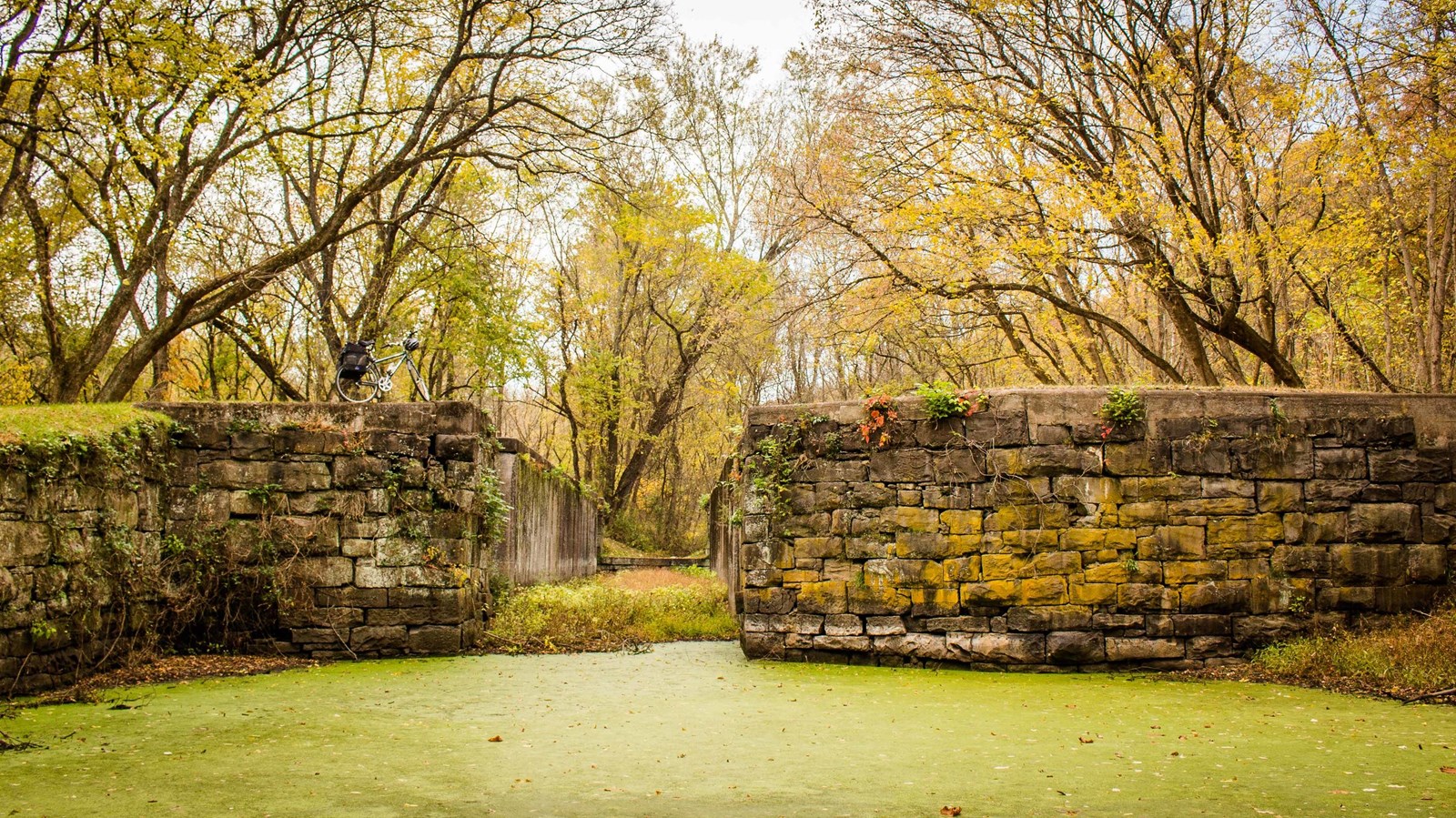Last updated: January 11, 2024
Place
C&O Canal Lock 67

Paul Graunke
Quick Facts
Amenities
1 listed
Scenic View/Photo Spot
Along the 184.5 miles of the canal are 74 lift locks. These locks were put into place to help boats overcome the 605-foot elevation change between Georgetown and Cumberland. The C&O Canal is like a staircase, canal boats traveled along the flat sections and used the locks to take a “step up or down” about eight feet. The locks typically had hand-operated miter gates that were simple and followed Leonardo da Vinci’s original 1485 design. Entering the lock was the most demanding part of canalling.
Lock 67, also known as Darkey’s Lock, is 9th of the upper 13 locks that was constructed as a “composite lock”, or a lock made with more than one material. It is made of kyanized (treated) wood and uncut stone. However, the use of wood created many problems. The wood lining in many of these locks were replaced by concrete from 1891–1924. On the other side of the lock is a bypass flume that allowed water to bypass the lock to water the level below.
The name of the lock comes from its long-time locktender Hughey Darkey. Only the foundation of the lockhouse remains and is partly underground.
Lock 67, also known as Darkey’s Lock, is 9th of the upper 13 locks that was constructed as a “composite lock”, or a lock made with more than one material. It is made of kyanized (treated) wood and uncut stone. However, the use of wood created many problems. The wood lining in many of these locks were replaced by concrete from 1891–1924. On the other side of the lock is a bypass flume that allowed water to bypass the lock to water the level below.
The name of the lock comes from its long-time locktender Hughey Darkey. Only the foundation of the lockhouse remains and is partly underground.
